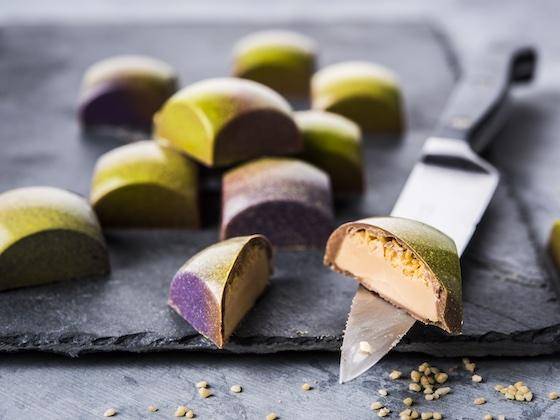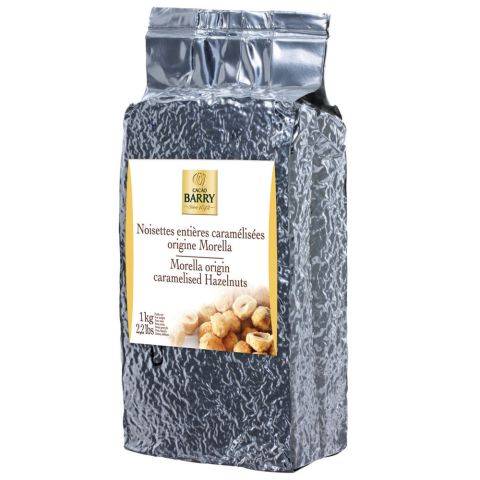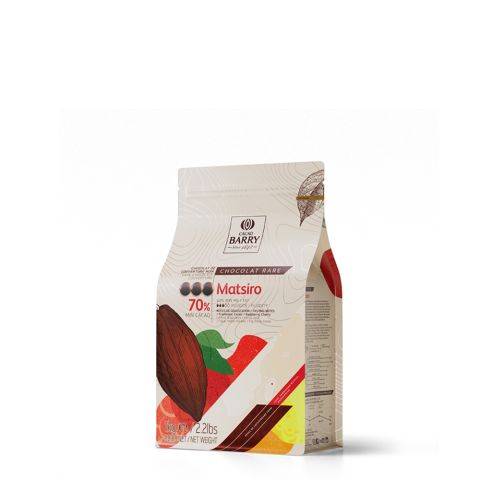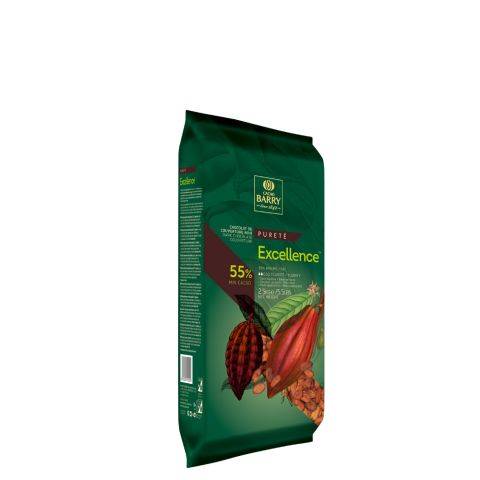Extending Shelf Life: Controlling Moisture
Extending Shelf Life: Controlling Moisture
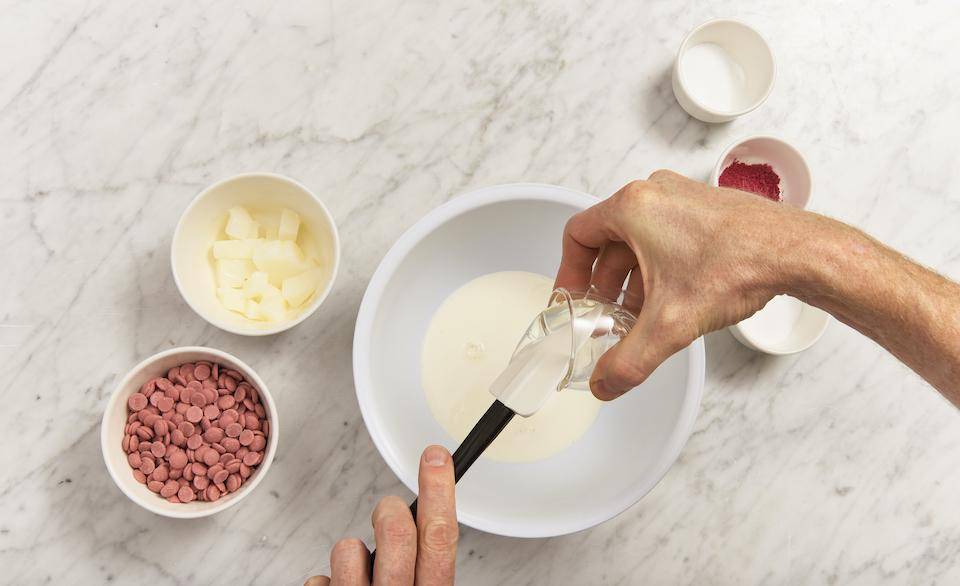
Balancing a ganache recipe is mostly a science but also part art. A chef strives to use as many water-binding ingredients as possible, but in doing so, they run the risk of compromising taste or texture. A ganache with a very low moisture content will be quite dry and firm and won't have the smooth, creamy texture we associate with a high-quality product. So "balance" is, indeed, the name of the game!
This fourth article in our guide to shelf life will explore these water-binding ingredients and look at how moisture affects shelf life. Subsequent articles take a deeper dive into water activity, hygiene, and more.
Previous Article

Ingredients That Bind Moisture
- All sugars
- However, the best sugars to use are those with a low sweetness that are good at creating a balance in relative humidity. These include:
* Glucose
* Sorbitol
* Glycerin - Salt*
- Alcohol*
- Acids*
- Fibers
- Proteins (milk protein, soy protein, etc.)
* see our previous article: Natural and Chemical Preservatives for Chocolate Confections to see why these ingredients are not commonly used for the purpose of extending shelf life.

Click to enlarge (desktop)
A Very Simple Example of How Water Affects Shelf Life
As you can see in the chart, milk is nearly entirely water, while clarified butter has no water at all.
Shelf life of milk = 1-2 weeks
Shelf life of cream = 2-3 weeks
Shelf life of fresh butter = 3-4 weeks
Shelf life of clarified butter = 6 months
As the amount of water a dairy product contains increases, its shelf life decreases.
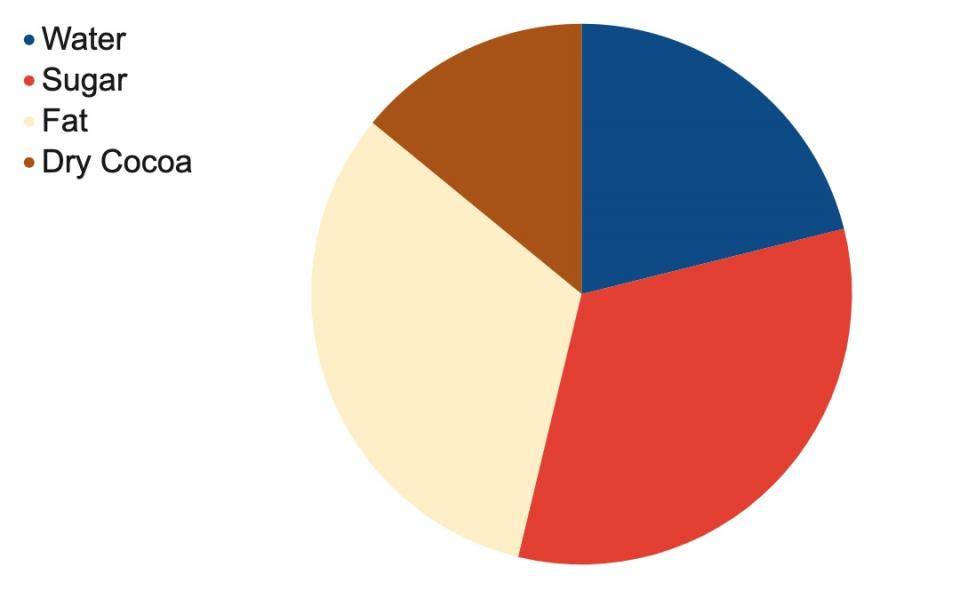
Ideal Dark Chocolate Framed Ganache Formulation
Based on trials, studies, evaluation of proven recipes, and a certain amount of intuition from our chefs.
To contextualize, note that the recommended total water content is 20% maximum. This is very close to the water content of butter, which as you can see above, has a shelf life on the longer end for the dairy products listed and is still smooth and creamy.
| Total Water Content | 20% Maximum |
| Total Sugar Content | 35 -30% Minimum |
| Cocoa Butter Content |
10-33% * |
| Dairy Fat Content | 15% Maximum |
| Total Fat Content | 25 - 40% |
| Dry Cocoa Content | 10 - 16% Maximum |
*depends on format

Extending Shelf Life: Binding Moisture
What's at work in a recipe "under the hood?" It's clear that achieving the right amount of moisture - neither too much nor too little - is crucial to creating a ganache with great flavor and texture that can hold up to shipping and storage, but why?
Each ingredient in a recipe can bind with water until it is saturated. Once this water has bonded with the ingredient, it is no longer available to microorganisms that can cause spoilage. Some ingredients have a larger capacity for binding with water than others.
Before we dive into the subject of Water Activity (AW), let's take a quick look at some terminology.
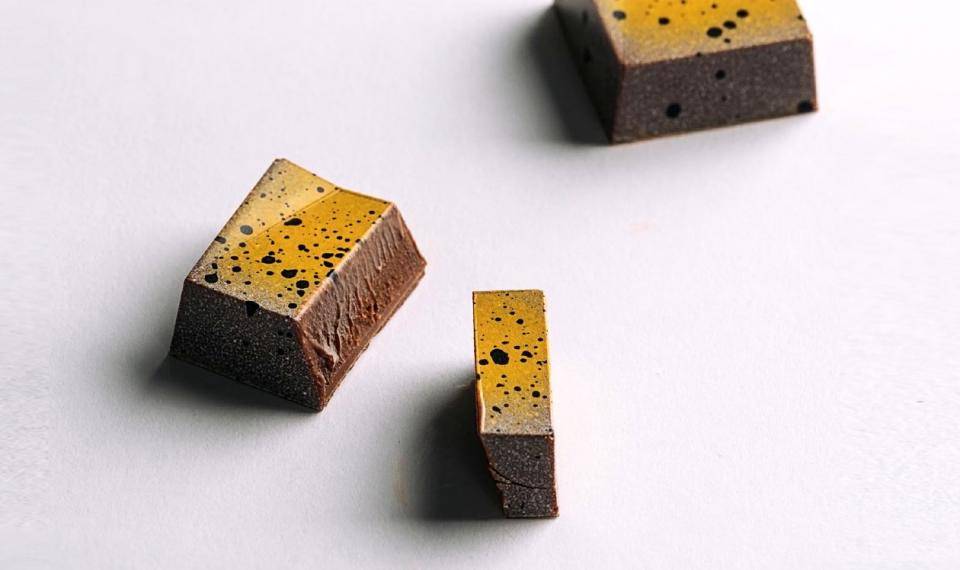
Water in Our Recipes
Total Water Content:
The total moisture content of a product only provides limited information on its shelf life
- Total moisture content = water in all products in the recipe
- Two foods with the same moisture content can have different shelf life
Bound vs Free Water:
The rate of spoilage actually depends on the water that is available to microorganisms and chemical reactions, not the total moisture content. This is where an ingredient's ability to bind water comes into play. The more water that is bound by our helpful ingredients, the less that is available for microbiological activity.
Water NOT available to microorganisms = bound water
Water that IS available to microorganisms = free water
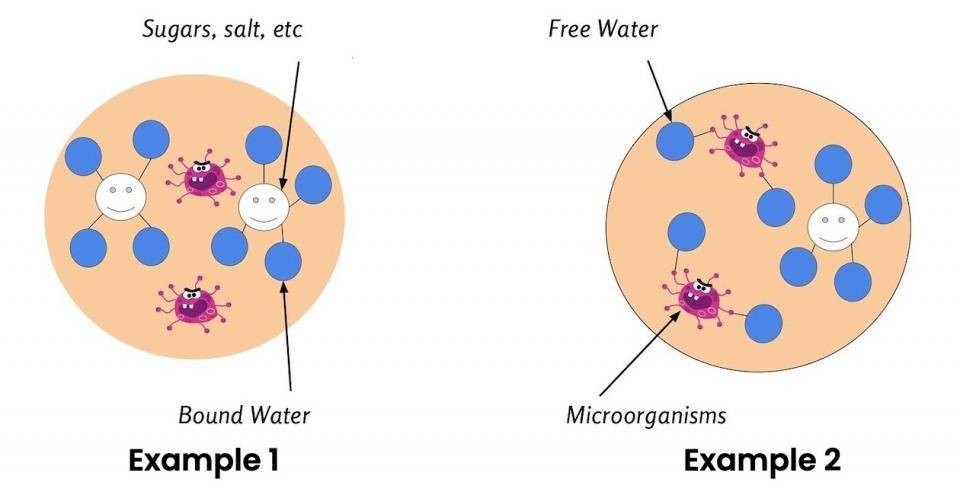
Take a Closer Look
| Example 1 (left) | Example 2 (right) |
| Water Content: 20% | Water Content: 20% |
| AW: .750 free water | AW: .900 free water |
The water content for each substance is identical: 20%, just like our ideal ganache formula above. However, Example 1 has more water-binding ingredients and, therefore, a lower water activity/amount of free water.

